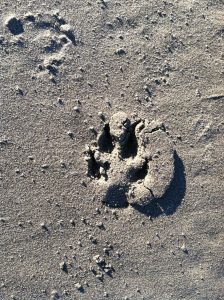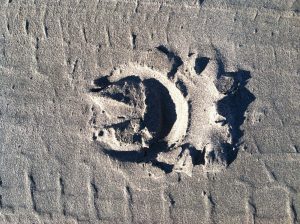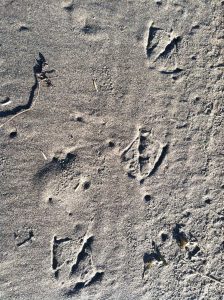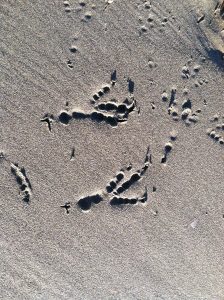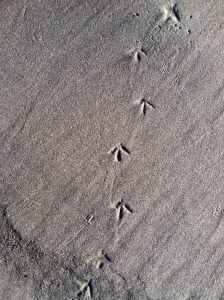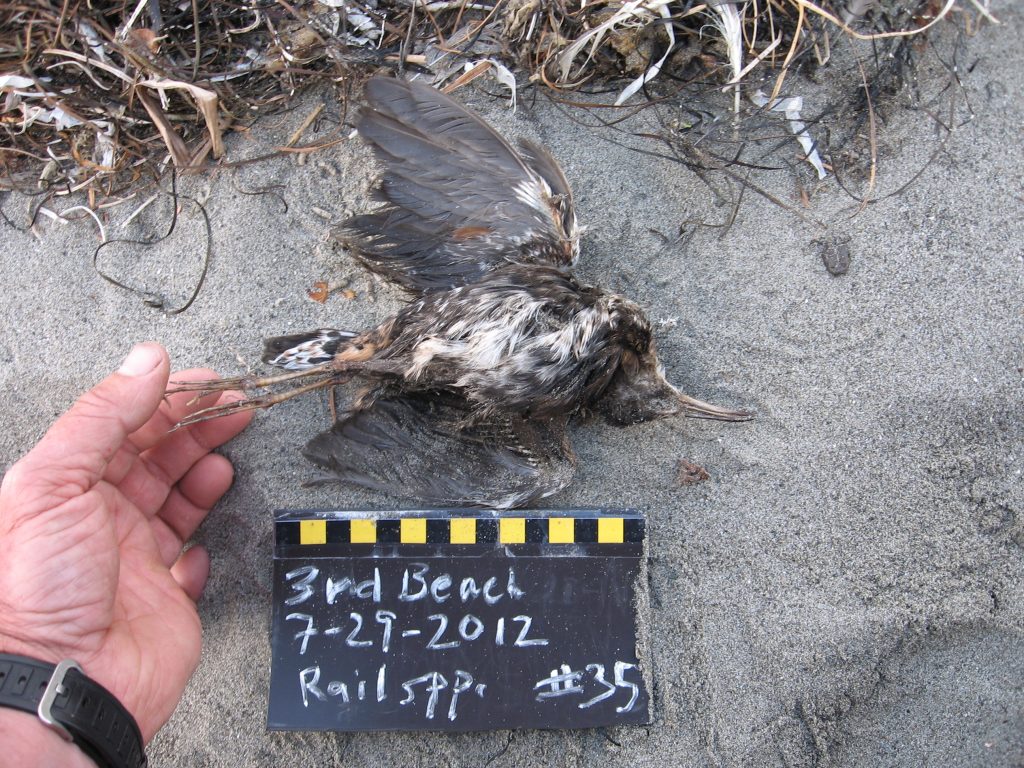Checking in with former COASST staff finds Annie Woods very much absorbed by her passion for farming. After leaving us Annie joined Local Roots, an sustainable urban farm owned by Jason Salvo and Siri Erikson-Brown. An intense growing season featured everything from beets to broccoli. Come winter Annie accepted an internship at Green String Farm in Petaluma, California where she joined 10 other interns from around the country with a similar goal of starting their own farms. Planting, pruning, composting, baking, irrigation, integrated pest management, butchering, candle-making, fat-rendering, ostrich wrangling – Annie did it all.
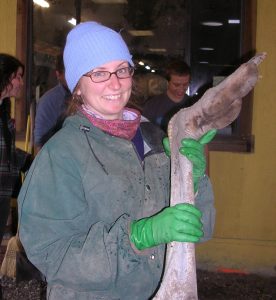
Annie and the ostrich foot
Ostrich wrangling?!? You bet. We won’t go into details, but here’s Annie showing off an ostrich foot. Yeow baby! Now that is a tarsus. With a measurement of 40-50 cm (yup, in COASST units that would be 400-500mm), ostrich tarsi are pretty much as long as it gets. And take a look at the feet – 2 front-facing extremely fleshy toes, and only the longest has a nail. Big padded toes and a long tarsus are a recipe for running really fast – they’ve been clocked at over 70 kilometers per hour. In fact, ostrich feet are a model for above-the-knee amputee prosthetics.

Check out those toes!
Although that nail might not look too dangerous compared to the talons of an eagle or a large owl, there’s quite a punch behind it. At 300+ pounds, the force behind an ostrich kick is enough to slice open an approaching predator – or unlucky person. Ouch! Given how fast they can run, best to stay away.
COASSTers might not be seeing this on the beach (we can only hope), but we thought we’d share a “foot-type moment.” Got a rare one? Send us a photo and your foot-type story.
